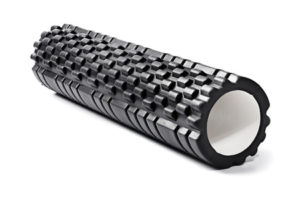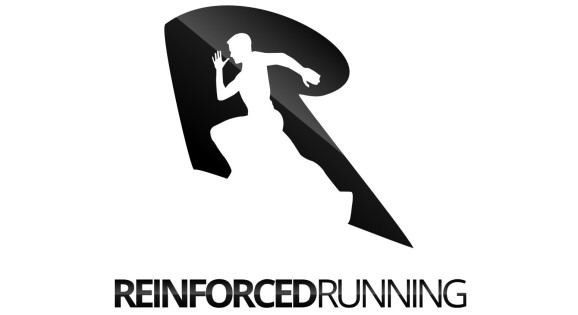Use Mobility and Stretching to Stay Healthy and Fast.
“I know I should be stretching, but I just don’t have time.”
“I am going to better about foam rolling this year.”
“My lower back is so tight; I can barely get out of bed in the morning.”
As a runner, can you relate to these thoughts?
If you are like most runners, mobility work is on the back burner. Maybe a yoga class here or there, but nothing consistent.
But, The constant aches and pains from training is a grind. As a runner. You know you need to be active with mobility to stay healthy.
Mobility and flexibility are essential for people and athletes. We forget to stretch for a few reasons. Tell me if you relate:
- It’s boring
- It hurts
- It feels hopeless
- There is no visible benefit
- I’d rather do other things to help my fitness.
Your issue is not a lack of time. It is a lack of consistency and routine. Pain-free running is a real thing. You are not cursed. You just need to have a plan and change in habits!
Three ways to improve your flexibility and mobility.
1) Static stretches
Holding a single position for an extended time allows your body to access more muscle fiber.
You will increase your overall range of motion and will avoid unwanted muscle damage.
Your body has an automatic safety respond that will stop you short of your potential range of motion. Your body thinks it is saving your muscles, tendons, and ligaments.
Hold a static stretch for 90-120 seconds and relax. You will bypass stop response and will advance to a broader range of motion. Actively allow yourself to sink deeper during each exhalation.
*** Static stretching lousy rap – for some reason runner believe that static stretching will lead to injury. The argument is you want to be ready to spring into action before you run not to have loose and lethargic muscle. Now, a “dynamic” warm-up has become the norm in the running world. There is merit to this argument in the context of pre-race or workout.
However, do not abandon stretching. Use static stretches post run, in the morning, or the evenings. You will only help your resilience and prevent long-term injury. Try adding static stretches to your routine before you rule them out!!!!****
2) Soft Tissue Mobilization
Soft tissue mobilization is also known as foam rolling and deep tissue massage. Your myofascia (fascia) covers the muscle through your body. It is the casing to keeping everything in place, and it is all connected.
Exercise and muscle damage create tightness in your myofascia. As you recover from exercise, your fascia may not heal properly. Tightness can occur because your fascia will bunch up and tangle. Soft tissue practice will allow your fascia to reset to its proper form.

Think of it like this:
Your fascia is collagen. Your hair is also collagen. When you do not comb your hair, you will get knots. Your muscle fascia is the same way.
Soft tissue work is like combing your muscles.
Loaded Stretches
Loading a stretch is adding weight to increase the intensity. You will get further depth and increase mobility (mobility is flexibility under load).
Loading a stretch will also allow you to recruit more muscle. As an endurance athlete, improving your endurance comes through training more muscle fibers. In the late stages of a race when you start to fatigue more muscle will help you keep moving.
Endurance athletes typically work with a limited range of motion during training (running, biking, swimming), which will only require a small amount of muscle fiber. Loaded stretches will increase your access to muscle.
Engaging in the fibers will also release hormones to improve recovery. Another great way to access more muscle fiber is through strength training. Click here to read the best strength routine for a runner.
Remain active while holding a “loaded stretch”. The stretch will feel like an isometric hold. You need to contract the area and remain tense through the stretch to activate more muscle recruitment.
Read more on Loaded Stretches in the awesome blog article by strength coach Christian Thibaudeau.
Your Mobility Plan in 4 steps
Step 1: An Assessment
A full body stretching routine is daunting. There is always more work to do and other areas to improve.
Your time is limited, so it is helpful to know where to spend time.
Mobility and flexibility assessments will help you discover your tightness.
Once you go through the evaluation, you will know where to spend your precious time.
During the assessment take time to think about where you are feeling the restriction. These will be the areas that you will then need to focus on during your mobility routine.
Your Movement Assessment
Squat hold
Area of Focus
Flutes
Hip flexors
Lower back
Calves
Overhead Squat
Areas of Focus
Upper back
Lower back
shoulders
Glutes
Calves
Straight Leg Toe Touch
Areas of Focus
Hamstrings
Glutes Calves
Ankle Check
Areas of Focus
Top of ankles
Calves
I made a guided Mobility Assessment for you to follow. Click here and test that mobility.
Step 2 Work up and down the chain
After your assessment, you will have an idea of where you are tight.

Discomfort can come from compensation and tightness in other areas of the body.
Think of it like this:
If you squeeze a balloon, the pressure will burst through the opposite side.
Your injuries and tightness can react in the same way.
Your calf pain might be from compensation in your hips. So, stretch your hips!
Attack your issues above and below the area of discomfort.
Step 3 Roll, Stretch, Load
After your assessment, you know where to target. So, let’s choose your stretches.
Choose 1-2 moves from each category and perform them in the roll, stretch, then load sequence.
- Roll to allow your muscles to relax
- Hold a static stretch in each spot for 2-3 min. Increase your range of motion.
- Load an exercise, contract the newly available muscle fibers, and to the extra benefit and mobility.
Ex) Tight Glute Routine
Roll – Glute Roll 2 mins each side
Stretch – Pigeon Pose 2 min each side
Load – Squat Hold 2-3 mins (with or without weight)
Do this routine two-three times per week.
Step 3 Create a plan
Your plan is for your personal needs. If you feel discomfort in your hips and hamstrings, then add specific movements to target your hips and hamstrings.
It’s that simple.
Choose 3-5 exercises that will last 2-3 min each
Stretch just 10-15 min at a time. Aim to hit your plan three days once it’s built into your routine.
Execute your plan for 6-8 weeks and be diligent! You’ll need patience.
*Create a habit*
“But I don’t have time to stretch”
You are probably busy, but in reality, you do have 10 minutes.
Your brain will go on autopilot during your day, and your unconscious mind will perform your habits. If you can engrain stretching into your autopilot routine you will be golden.
Set a reminder. It can be a yoga mat in your living room or an alarm on your phone. Figure out what will remind you to make mobility work happen!
If you are struggling than create a “mini-habit.”
If ten minutes seems like a lot, then stretch for one minute. Find this one minute by creating a trigger. Your trigger can be something that you currently do.
EX) After I ________; I will stretch for 1 minute.
Once you start, you may want to keep going, but don’t force it. Add a one-minute stretch where it fits to build the habit.
What this Ted Talk by B.J Fogg. He is the mini habit master!
Recheck your mobility assessment every 4-5 weeks to feel any improvement. Change your routine to a different area.
I know you are tight, but you are not cursed to be! Make a plan, create a habit, and run healthy!

